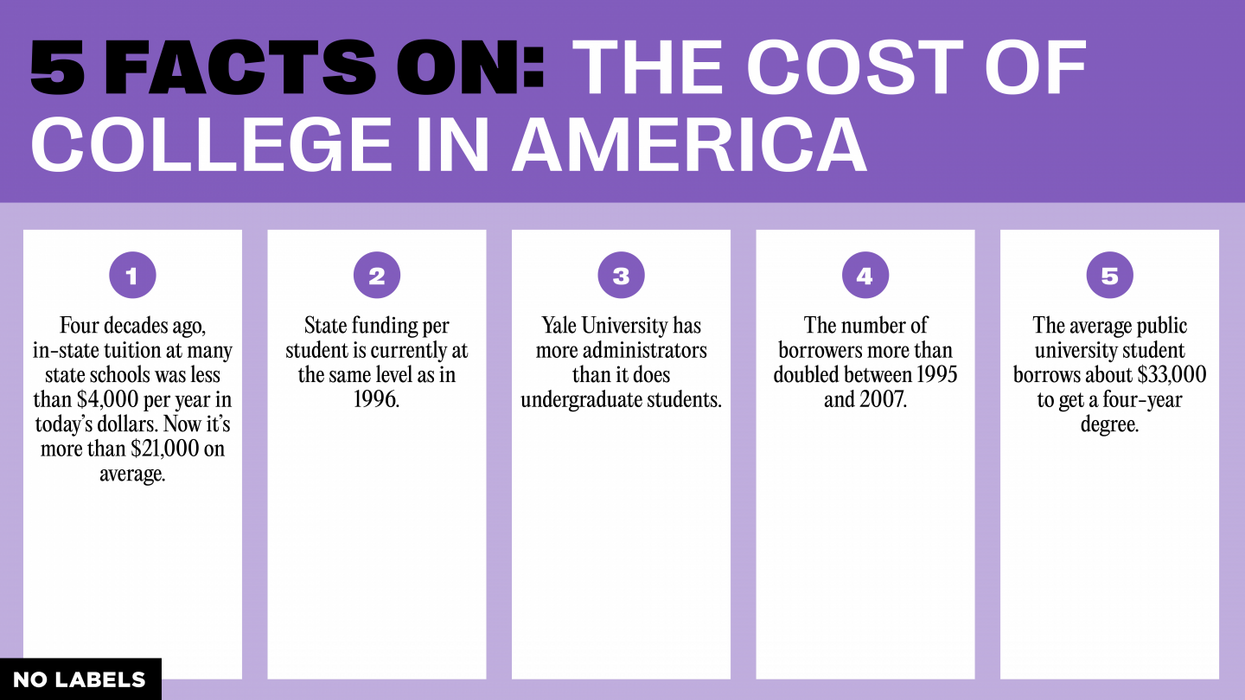
The Big Insight: The cost of attending a four-year state college in the U.S. has more than quintupled in the last 40 years.
There is plenty of disagreement about the fairness and the legality of President Biden’s recent decision to cancel some college student debt for millions of borrowers.
But most on both sides of the debate would agree the cost of college is out of control. Unfortunately, Democrats and Republicans don’t appear close to finding a solution. Here are five facts on college costs and student loan debt in America.
1. Four decades ago, in-state tuition at many state schools was less than $4,000 per year in today’s dollars. Now it’s more than $21,000 on average.
Costs at private nonprofit colleges are even higher, with a student starting at one of these institutions today paying about $49,000 per year.
2. State funding per student is currently at the same level as in 1996.State expenditures on higher education plummeted in the wake of the 2008 financial collapse. While expenditures have slowly been rising, they are still only back to where they were a quarter-century ago. Tuition and fee revenues are up 57% in that same period.
3. Yale University has more administrators than it does undergraduate students.
Twenty years ago, Yale had 3,500 administrators and managers serving 5,307 undergraduates. The school now has more than 5,000 managerial and professional staff, while undergraduate enrollment is about 4,700. And the Yale example is indicative of broader trends. The cost per student for administrative salaries in the University of North Carolina system nearly doubled in a decade.
4. The number of borrowers more than doubled between 1995 and 2007.
As costs climbed, so did the number of students going to college — and how many of them took out loans to pay for it. While the share of students enrolled in college rose by 36% during this period, the number of borrowers rose from 4.1 million to 8.6 million. The amount borrowed during this period also grew by 35% after accounting for inflation. One out of 11 borrowers were behind on their student loan payments before the pandemic freeze.
5. The average public university student borrows about $33,000 to get a four-year degree.
The total U.S. student loan debt is more than $1.7 trillion — up about 20% in just the last five years. Among all U.S. adults, 15% say they have outstanding undergraduate student debt, while 24% say they have paid off all their student loans. The average student loan debt exceeds the average auto loan debt ($20,545) and the average credit card debt ($5,148).

